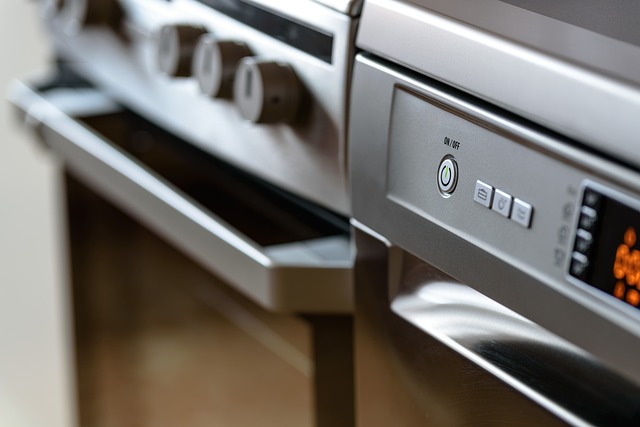By Glen Luke Flanagan, Deputy Editor at USA TODAY Blueprint
At a time where inflation is top of mind and people keenly remember the economic uncertainty of the coronavirus pandemic, getting a fair deal when you make a purchase is as important as it’s ever been. A new study from USA TODAY Blueprint reveals the top 25 brands American shoppers feel offer fair deals, as well as the best deals respondents say they’ve received.
Top 5 Brands Overall
For this study we surveyed 1,251 American consumers ages 18 to 58 about their experiences with 100 high-profile brands in four major product categories and 10 retail store brands.
Roughly 70% of respondents felt that pricing was fair across all brands evaluated, but the fairest brands had significantly higher satisfaction rates. Here are the top five brands to emerge:
- Sharpie: About 89% of respondents feel that Sharpie is fair. The iconic Sharpie marker was introduced in 1964 and was the first pen-style permanent marker.
- Anker: About 89% of respondents feel that Anker is fair. Anker was founded in 2011 with the aim of providing affordable chargers and laptop batteries. Now, the company is the top-ranked electronics brand in our study, and employs thousands of people.
- Honda: About 88% of respondents feel that Honda is fair. The Honda Motor Co. Ltd. was incorporated in Japan in 1948.
- Toyota: About 88% of respondents feel that Toyota is fair. Toyota opened its first U.S. office in Hollywood in 1957.
- Dove: About 88% of respondents feel that Dove is fair. Dove launched in the U.S. in 1957 with a beauty cleansing bar.
Top Brands By Category
Our research found that of the four categories considered, people tended to judge electronics and home and appliances as most fairly priced — at about 72% of respondents in those two categories. By contrast, apparel averaged 68% and automotive brands averaged 67%.
Here are the top five fairest brands in each of the four categories our research considered:
- Apparel: The top five apparel brands, in order, are Adidas (84%), New Balance (84%), Old Navy (84%), Converse (82%) and Columbia (79%).
- Automotive: The top five automotive brands, in order, are Honda (88%), Toyota (88%), Nissan (78%), Chevrolet (76%) and Acura (76%).
- Electronics: The top five electronics brands, in order, are Anker (89%), Amazon devices such as Kindle and Echo (86%), Logitech (85%), LG (81%) and Google devices such as Pixel and Nest (80%).
- Home and appliances: The top five home and appliance brands, in order, are Sharpie (89%), Dove (88%), Rubbermaid (87%), Instant Pot (87%) and Black & Decker (85%).
Full List of Top 25 Fairest Brands In America
Here’s the complete list of the top 25 brands American shoppers feel offer the fairest deals, as well as the percentage of respondents who consider that brand fair and how we categorized each brand for our research:
- Sharpie (89%), home and appliances.
- Anker (89%), electronics.
- Honda (88%), automotive.
- Toyota (88%), automotive.
- Dove (88%), home and appliances.
- Rubbermaid (87%), home and appliances.
- Instant Pot (87%), home and appliances.
- Amazon devices such as Kindle and Echo (86%), electronics.
- Logitech (85%), electronics.
- Black & Decker (85%), electronics.
- Adidas (84%), apparel.
- New Balance (84%), apparel.
- Old Navy (84%), apparel.
- Coleman (83%), home and appliances.
- Cuisinart (83%), home and appliances.
- Converse (82%), apparel.
- Phillips (82%), home and appliances.
- LG (81%), electronics.
- Google devices such as Pixel and Nest (80%), electronics.
- IKEA (80%), home and appliances.
- Hamilton Beach (80%), home and appliances.
- Burt’s Bees (79%), home and appliances.
- Columbia (79%), apparel.
- Skechers (79%), apparel.
- Vizio (79%), electronics.
Whatever type of purchase is being made, we recommend using one of the best credit cards to take advantage of either rewards or a 0% introductory APR whenever possible and make a good deal even better.
How Prices Impact Behavior
While price is one of the key factors impacting whether people feel they are getting a good deal on a purchase, it’s not the only one. Quality matters too.
“Beauty is in the eye of the beholder, and so is the notion of a fair deal,” said Sean Snaith, director of the University of Central Florida’s Institute for Economic Forecasting. “Price in and of itself doesn’t guarantee the notion of a fair deal, as most people who have made a purchase from Wish.com could tell you that.”
However, price is certainly top of mind. We found that 43% of consumers are angry about pricing on at least a weekly basis.
If consumers opt to pay a high price despite being unhappy about it, it’s typically because of the quality of the product (41%), an urgent situation or no patience to shop around (23%), no other options (20%), the uniqueness of the product (11%) or because the brand aligns with the consumer’s values on factors such as environmental impact or labor practices (4%). A mere 1% opted out of these factors by selecting “none of the above.”
Asked about the best deals they ever got, survey respondents cited (in this order) televisions, computers, shoes, smartphones, gaming consoles, jackets, headphones, tablets, shirts, and vacuums.
About the author
 Glen Luke Flanagan is a deputy editor on the USA TODAY Blueprint credit cards team. Prior to joining Blueprint, he served as a deputy editor on the credit cards team at Forbes Advisor, and covered credit cards, credit scoring and related topics as a senior writer at LendingTree.
Glen Luke Flanagan is a deputy editor on the USA TODAY Blueprint credit cards team. Prior to joining Blueprint, he served as a deputy editor on the credit cards team at Forbes Advisor, and covered credit cards, credit scoring and related topics as a senior writer at LendingTree.
Related Articles

Hexnode CEO on how the “Holiday Illusion” is Masking the Risks of Retail’s Seasonal Workforce
The danger of seasonal hires is magnified not just by who is accessing the network, but when they are doing it. Sophisticated threat actors possess a deep understanding of the retail operational calendar.

The New Frugality: How Inflation and Tariffs Are Reshaping Consumer Spending
One of the most telling shifts is how shoppers approach decision-making. Where convenience once dominated, consciousness now plays a larger role. People are researching more before making a purchase, comparing prices across multiple platforms, and questioning whether they really need the product in the first place.

Embracing new concepts vs the return to brick-and-mortar
Balancing the return to physical retail and the development of new technologies to enhance customer experience and drive operational efficiency for long-term success.
Enartis to Acquire Parsec in Winemaking and Retail Deal
The deal will bring Enartis and Parsec together to help wineries manage every part of production more easily and efficiently, from grape to bottle.


 for the latest news and job opportunities in retail tech
for the latest news and job opportunities in retail tech 